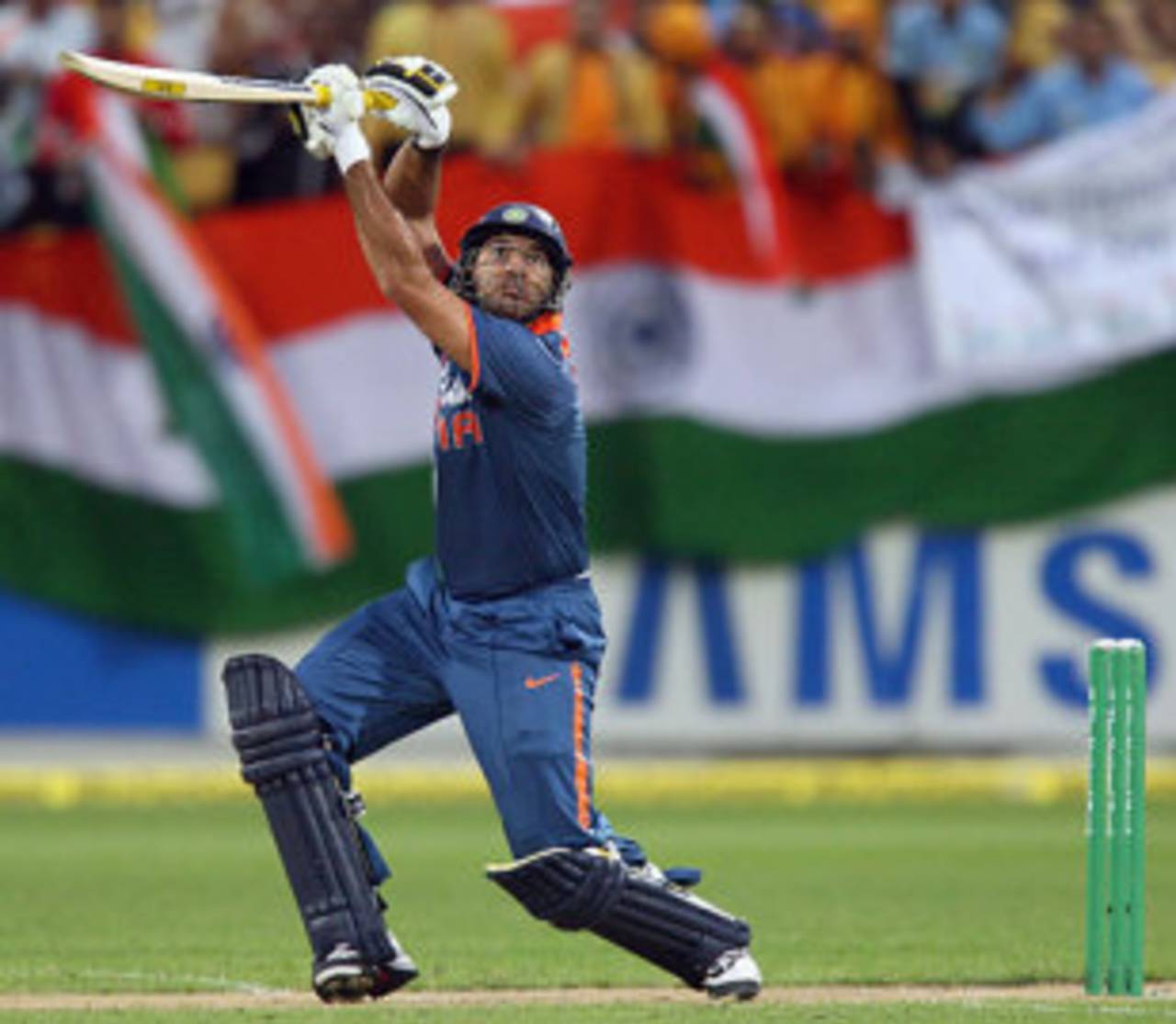The sixes don't add up
Why it's not good for cricket that batsmen are hitting it out of the park more regularly than ever
12-Apr-2009

Sixes are exciting, but they've been seeming gratuitous of late • Getty Images
David Bowie's seventies hit "Changes" would be an appropriate theme song for
the IPL, as teams prepare for a new season in another country where they'll play
under vastly different conditions from the first, highly successful, tournament in
India.It'll be a testing time for both players and officials, and in a game where gimmicks
are often embraced and logic scorned, it'll be interesting to see who fares best in
coping with a new set of challenges.
Cricket has gone through rapid change in the last decade with the advent of Twenty20. In
this period officials have tended to live for the moment rather than introduce
improvements designed to enhance the long-term health of the game. It's time for
officials to place a higher priority on shaping the game for what promises to be an
exciting and challenging time ahead.
A good starting place is the balance between bat and ball. And the statistic that stands out like a Sachin Tendulkar back-foot drive is the increase in the amount of sixes hit in cricket. In Twenty20 international competition (including the IPL) a little over 22% of the runs are scored by hitting sixes. That dwarfs the figures of nearly 4% in Tests and a
fraction over 7% in ODI's since 2000, an era where the bats have significantly
improved. Compare that with the 1970s when in Tests it was 2% and in ODIs around 4%.
It's a trend to make a scuffling market analyst envious.
But what does it all mean in the context of the game?
There's no doubting the excitement of seeing a towering six clatter into the stands. People who saw it still talk of Keith Miller's monster shot that hit the Members Stand clock at the SCG in the 1950s, and the sight of Kim Hughes prancing down the pitch to launch a Chris Old offering on to the upper balcony of the Lord's pavilion in 1980 will always stay in my memory.
Part of the magic of a six is the rarity of the occasion; like a sudden goal at the end of a tense battle on the football pitch. Football is not designed to be a 14 plays 12 contest anymore than sixes are meant to be the predominant scoring shot in cricket.
Part of the magic of a six is the rarity; like a sudden goal at the end of a tense battle on the football pitch. Sixes are not meant to be the predominant scoring shot in cricket
Many fans are thrilled by the improved fielding standards in all forms of the game.
It's not long ago Ricky Ponting was lamenting that shortened boundaries in
Australia meant a home-side advantage in fielding and running between wickets was
being squandered. Brilliant fielding and daring running between wickets will be less
prevalent if the six becomes a regular scoring shot. A captain can attempt to find a
solution to stop a flood of fours, but he can't defend sixes.
In Test cricket the amount of runs scored in boundaries (fours and sixes) has increased
from 46% in the nineties to a mammoth 54% in the new millennium. That is a rare
trend; an upward swing that needs to be halted.
Batsmen with helmets and other assorted armoury are feeling more and more inclined
to challenge fast bowlers and charge onto the front foot. Driving on the rise is one
of the big improvements in batsmanship, but when it can be done with impunity against
a good bowler, the bowler is left with very little margin for error. With batsmen not threatened by injury, the bats improving, the pitches tending to become flatter and the boundaries shrinking, fast bowlers must feel like an endangered species.
The above trends also adversely impact spin bowlers. It's time for officials to seriously consider the competitive aspects of the game and how they want cricket to be played in the future.
Where possible the game in all forms must remain a reasonably even contest between
bat and ball. The six must always be a hard-earned and exciting reward for batsmen
brave enough to challenge the bowler, not a cheap thrill for the spectators. And
while it's good for the game that batsmen are more inclined to be audacious, there
must always be a place for those who are fluent without being muscular.
Leave it to the ground PA systems to blare out "Ch-ch-changes" and the officials to
implement the improvements. That way the game will be best served.